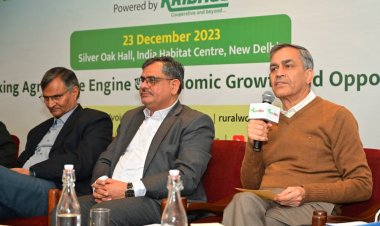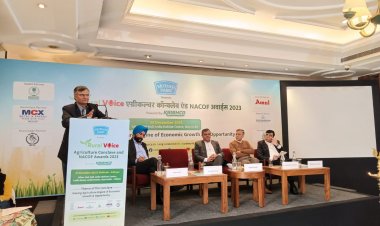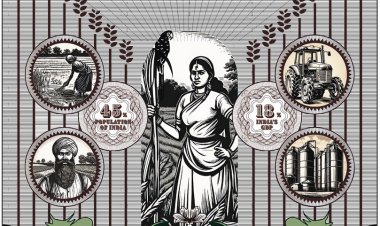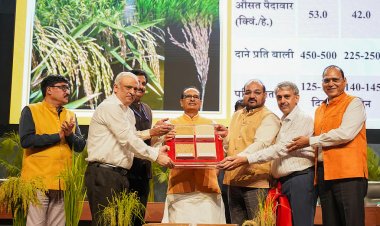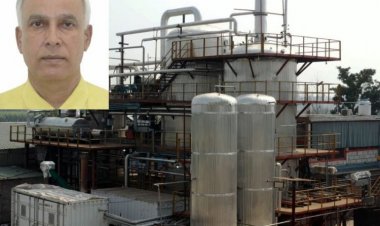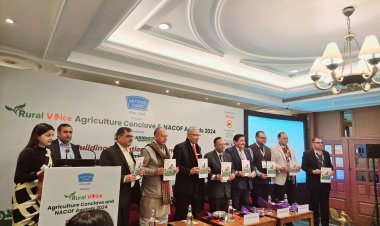Agenda for Rural India: Agriculture- Difficult Harvests
No discussion on rural India would be complete without a conversation on agriculture. In our convenings with rural citizens across the country, organized by Rural Voice and Socratus on “Agenda of Rural India”, around 60% of our participants were farmers, by which we mean they were involved in agricultural activities for their livelihood. The reality of the agrarian crisis plaguing rural communities for the past two decades was painfully evident in the worries, hopes and dreams of our participants. While most of the issues they raised were not new, it was illuminating to understand the perceptions and priorities of the farmers themselves.
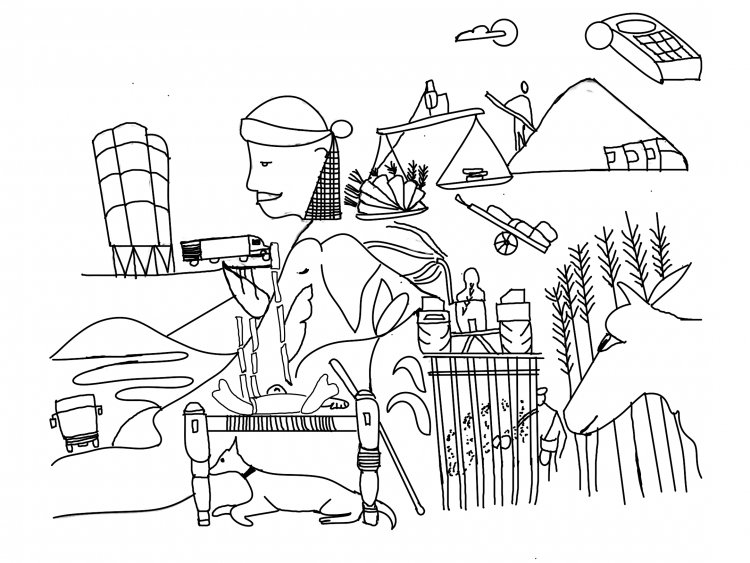
No discussion on rural India would be complete without a conversation on agriculture. In our convenings with rural citizens across the country, organized by Rural Voice and Socratus on “Agenda of Rural India”, around 60% of our participants were farmers, by which we mean they were involved in agricultural activities for their livelihood. The reality of the agrarian crisis plaguing rural communities for the past two decades was painfully evident in the worries, hopes and dreams of our participants. While most of the issues they raised were not new, it was illuminating to understand the perceptions and priorities of the farmers themselves.
Everywhere we went, farmers told us that it was becoming almost impossible to sustain themselves through agriculture alone. Crop prices were simply unable to keep up with the costs of farm inputs. As a young farmer from Western UP told us: “Aur sab itni costly hote ja rahi hai bohot zyada.....har tarah se pressurise kar diya hai” [Everything is becoming so costly, including fertilizers and pesticides, that we are being pressured from all sides] In Muzaffarnagar, part of the “sugarcane belt” of North India, the stagnation of the FRP (Fair and Remunerative Price) and delay in payments from the government were common problems. Farmers here also complained of the rising cost of basic necessities and farm inputs, including pesticides, fertilizers, seeds and labour. Even in this relatively prosperous agrarian belt, farmers were being forced to take loans to continue farming. It was telling that no farmer wanted their children to become farmers and there were hardly any takers from the younger generation as well.
Also Read This: Agriculture needs hand holding now: Existential crisis for rural India
In Odisha, farmers felt that crop prices were hardly remunerative and that the root causes of poor price realization were the difficulties in accessing markets and the lack of market infrastructure. As a farmer from Kendrapara district said: “Jo utpadaka rahuchi…promukho kaarono hela je shethare godam ghoro abhab rohichi shobu ancholore ebong shitala bhandara abhab rohichi [The main reason for the poor price received by farmers was the lack of storage facilities like warehouses and cold storages].” Most farmers were forced to sell their produce directly at the farm gate to local traders and middlemen.
This happened due to poor transportation facilities and the lack of warehouses and cold storages in which to store their produce. In the very different arid agroecological zone of Rajasthan, farmers raised similar issues of the lack of storage facilities and marketing opportunities. They told us how crop prices were unable to keep up with the rising costs of farm inputs such as seeds, fertilizers and pesticides, which ended up squeezing their profits. In Shillong too, we heard the same story: poor price realization due to inferior road connectivity, lack of storage facilities and delayed payments. In Coimbatore, farmers felt that the MSP (Minimum Support Price) was too low and that it should be decided by the farmers themselves. They suggested that MSP should be extended to crops commonly grown in Tamil Nadu, such as tea, coffee, vegetables, millets and spices.
Also Read This: No More Blue Skies: Rural India's Pollution & Climate Battle
In many of our events, there was also a perception that the MSP and good prices alone could not address the issue of decreasing viability of agriculture. Farmers everywhere voiced their expectations that governments would secure their incomes through increasing and universalizing income support under schemes such as PM-KISAN. They also suggested that value-added products and local industries in agriculture should be actively supported and encouraged by governments, as a way to increase the profits of farmers. Farmers felt the capacities of collective organizations such as FPOs (Farmer Producer Organisations) and cooperatives should be enhanced to take on this responsibility. In all our convenings, we also heard that landowning farmers were unable to source labour for their fields, and that they were increasingly relying on migrant labour for cultivating their farms. They suggested that agricultural work should be provided under NREGA, and that the wages could be jointly paid by the farmers and the government, thereby also ensuring a higher wage rate.
This brings us to the matter of government schemes on agriculture. The lack of awareness about such schemes, due to which they were not reaching those who were in need, seemed to crop up in every location. This was felt strongly by our participants from Rajasthan, who suggested that information about government schemes should be displayed outside all government offices. In Meghalaya, farmers felt that they should have better information on and access to government schemes on agriculture. In Odisha, participants were dismayed at the delayed or lack of implementation of government schemes such as MNREGA.
Also Read This: Rural India still awaits basic infrastructure and services
Another issue that came up with striking regularity was the overuse of chemical fertilizers and pesticides. While this is a widely accepted problem amongst agricultural scientists and experts, it was interesting to note that the level of awareness among farmers regarding this issue was also quite high. In Odisha, farmers told us that these harmful chemicals were leaching into and polluting water sources as well, including groundwater. In Rajasthan, we heard the concern in their voices about how excessive chemical use was causing cancer and other diseases in rural areas. They felt trapped in systems that encouraged the overuse of chemicals.
Farmers also prioritized a concern that does not figure prominently in the discourse on agriculture: human–animal conflict. In UP, farmers were afraid to even plant crops due to the stray cattle menace. In fact, it was the issue that resonated the most among our participants in Muzaffarnagar. Farmers suggested several solutions, ranging from using government funds to build cattle shelters in every village to a monthly payment for farmers to care for their old cattle, to legalizing the cattle trade. In Odisha, Tamil Nadu and Meghalaya, wild animals from the forested areas nearby often entered their fields, destroying crops and endangering the safety of the farmers themselves. In Tamil Nadu, participants expressed deep frustration and helplessness in the face of attacks by elephants and wild boars that ruined their fields and homes and often injured them physically. As a farmer from Coimbatore district told us: “In the division along the western ghats, from Tenkasi to Satyamangalam forest division, millet crops can't be grown due to deer nuisance, pig nuisance and peacock nuisance’. A farmer from the Nilgiris foothills even carried a photo album documenting the damage in his area. The farmers believed that ill-conceived government conservation schemes were to blame for this rise in human–animal conflict.
Also Read This: Agenda for Rural India: Unemployed- Choice or Compulsion?
We cannot close this section without mentioning an issue that is vital to agriculture: water. Water for irrigation was a concern everywhere, but especially in Odisha and Rajasthan, two contrasting agroecological regions. In Odisha, the impact of increasingly erratic rainfall was felt all the more keenly due to poor irrigation facilities. In Rajasthan, the declining quality of groundwater due to overuse of chemicals made good irrigation facilities vital to the future of farming.
(The author is an associate with Socratus.)



 Join the RuralVoice whatsapp group
Join the RuralVoice whatsapp group

















